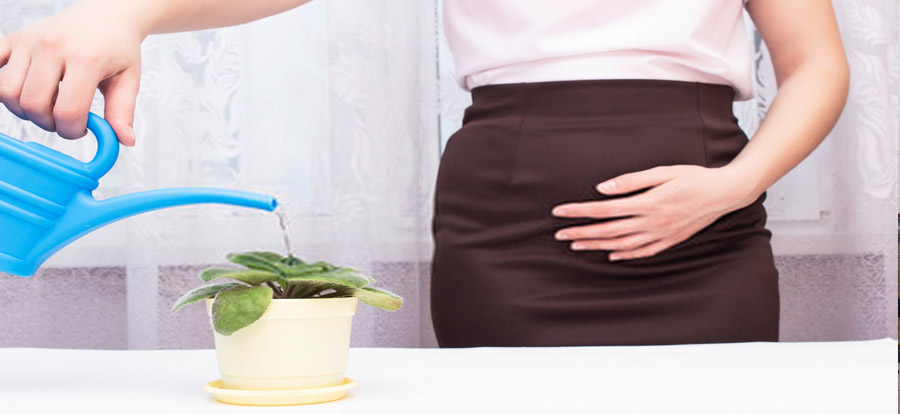The act of urinating and holding urine seems simple, but for that to happen we depend not only on the proper functioning of the urinary tract.
In this case, we also need the pelvic floor muscles, the abdominal wall, and the diaphragm to be in good condition. The pelvic floor muscles are divided into two layers, one superficial, and the other deep.
The superficial layer, better known as the perineum, surrounds the external genitals and the anus. They are formed by the bulbous-responsive, ischemic-cavernous, superficial transverse, deep perineum muscles, external urethral sphincter, and external anal sphincter.
The perineum has the function of controlling the urinary flow, making sexual intercourse possible and, in addition, it is essential during normal birth.
The deepest layer, on the other hand, consists of the ischioscoccygeal and levator ani muscles (puborectal, pubococcygeal, and iliococcygeal), the set of these muscles forming the pelvic diaphragm, which is the support base of the internal organs.
How the urination process occurs?
Let’s start with urine, it is produced by the kidneys, and it flows through the ureters until it reaches the bladder, which is its reservoir. From the bladder, the urine passes through the urethra where it eliminates approximately 95% of water, the elimination of water is necessary due to some toxic substances that are dissolved in the plasma.
When the urine reaches the bladder, the detrusor muscle (the smooth muscle that lines the urinary bladder wall) relaxes so that this liquid can be better accommodated.
Bladder filling is detected through the bladder stretch receptors and also by the internal sphincter muscle (smooth muscle) that contracts involuntarily to prevent bladder emptying.
As the bladder fills, these receptors become excited and the smooth muscle begins to send contraction reflexes. These reflexes are modulated by pathways that come from the brain and allow the voluntary control that comes from the external sphincter (skeletal muscle), allowing the resistance to urinate.
In short, before urination begins the diaphragm and the abdominal wall muscles contract, generating end abdominal pressure. After the pubococcygeal muscles relax and move the bladder neck down, this descent stimulates the contraction of the detrusor muscle.
At the same time, the contraction of the longitudinal fibers of the urethra shortens, opening the internal ostium of the urethra, and then the urine is expelled from the bladder.
When the individual has a disturbance in the urinary system or in the structures of the pelvic floor, abdominal wall, or diaphragm, he is unable to voluntarily start or stop urination, and this is what occurs in patients with urinary incontinence.
Types of Urinary Incontinence
Incontinence can be sudden and temporary, there are several types of incontinence, but the four most common are:
Stress Incontinence
This type of incontinence is one in which the involuntary loss of urine occurs due to a sudden and unexpected intra-abdominal pressure.
This can happen in impact activities, effort tasks such as lifting heavy objects or simply coughing, laughing, or sneezing.
Urge Incontinence
Also known as overactive bladder, this incontinence is characterized by hyperactivity of the detrusor (the muscle that contracts the bladder), as there is a sudden urge to urinate, and often makes the individual not arrive in time in the bathroom due to the inability to control the release of urine.
Excess Incontinence
This type of incontinence occurs when there is an accumulation of urine in the bladder, with small leaks occurring during the day. This happens due to the distention of the bladder and the presence of an obstruction that prevents the individual from emptying the bladder completely.
Mixed Incontinence
Mixed incontinence has characteristics of two types of incontinence mentioned above (Stress / Urgency Incontinence Mixture), that is, an incompetent sphincter associated with a bladder that contracts involuntarily.
Causes of Urinary Incontinence
Several mechanisms can lead to urinary incontinence, sometimes more than one mechanism is associated, among them, we can mention:
Urinary or vaginal infections
As estrogen levels drop during menopause, the bladder becomes less elastic, causing involuntary urination.
Intestinal constipation
The natural weakening of some muscles in the pelvic region causes the individual to present a deficit of sphincter contraction, eliminating urine involuntarily.
Side effects of medications
Postpartum or genital surgery also predisposes individuals to incontinence due to possible pelvic muscle injuries.
Obesity
Obstructive pulmonary pictures / chronic cough both generate abdominal pressure;
Nerve or music impairments
Obstruction of the urethra due to hypertrophy or tumors in the prostate can lead to incontinence due to urine retention.
Discover more from Pilates All Ages
Subscribe to get the latest posts sent to your email.
